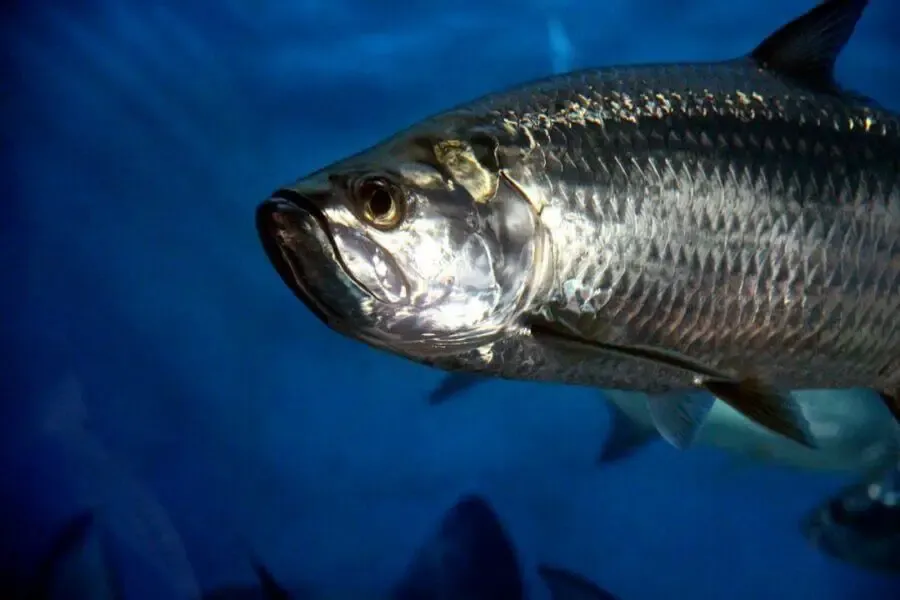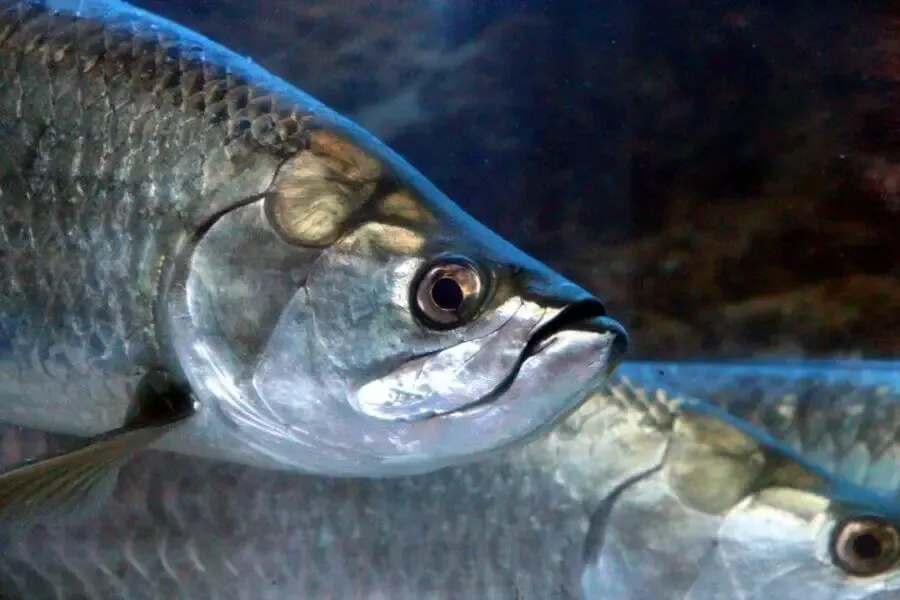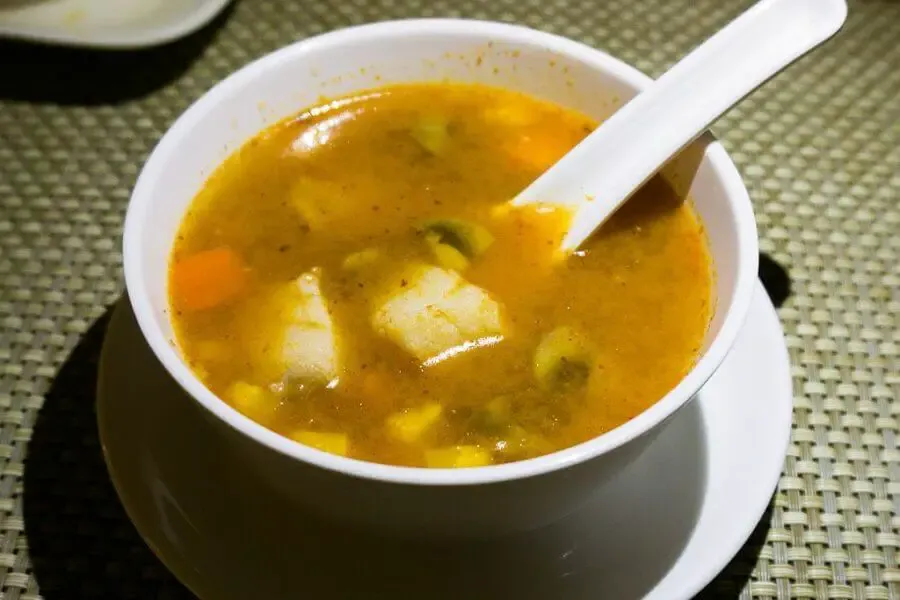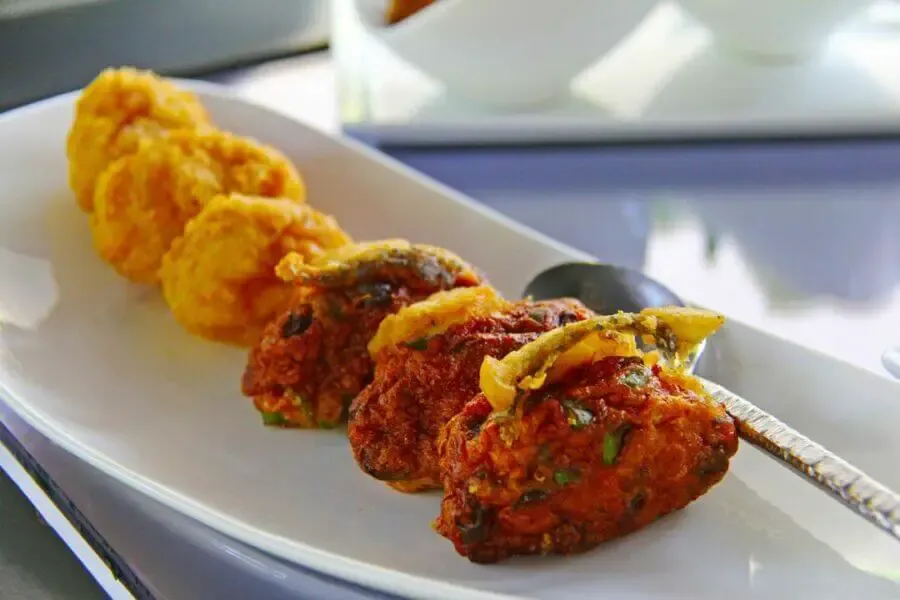While tarpon can be caught for sport fishing purposes, they are not commonly sought after for culinary consumption due to their strong odor, flavor and unique characteristics. However, when properly prepared and cooked, tarpon can be delicious and enjoyable, especially when combined with complementary ingredients.
Should You Eat Tarpon?
For adventurous eaters and those interested in trying unique and less common fish species, tarpon presents an opportunity to explore new flavors and culinary experiences.
Some people enjoy the challenge of working with a fish that has a distinct taste and finding ways to incorporate it into their cooking repertoire.
Why Some People Do Not Eat Tarpon?
Tarpon is not commonly consumed for culinary purposes, and there are several factors to consider when it comes to eating tarpon:
- Strong Flavor: Tarpon has a distinct and strong flavor that can be overwhelming for some individuals. It is not a mild-tasting fish like many popular edible fish species. Plus, it contains a lot of small bones.
- Sport Fish: Tarpon is highly regarded as a sport fish due to its size, strength, and acrobatic behavior when hooked. Many anglers practice catch-and-release when targeting tarpon, promoting the conservation and sustainability of the species.
- Regulations and Conservation: Tarpon may be subject to specific fishing regulations and conservation efforts in different regions. It’s essential to check local fishing regulations and guidelines before attempting to catch or consume tarpon.
- Potential Toxins/Contaminants: As with any fish, there may be potential concerns regarding the accumulation of toxins such as mercury or environmental pollutants in tarpon. It is recommended to consult local advisories and guidelines from relevant health authorities regarding the safety of consuming tarpon from specific areas.

Is it Legal to Catch Tarpon?
In the United States, tarpon are protected by regulations that vary by state and can include specific seasons, size limits, and catch-and-release requirements. It is crucial to consult the fishing regulations of the specific state or jurisdiction where you plan to fish for tarpon to ensure compliance with the law.
For example, in the state of Florida, the tarpon is a catch-and-release-only species – meaning that you are not permitted to keep your catch unless you are going for an IGFA (The International Game Fish Association) world record and have purchased a Tarpon Tag.
Tarpon Tags are limited to one person per year and cost approximately $50.
How Much Does a Tarpon Weigh?
On average, adult tarpon typically range in weight from 60 to 250 pounds (27 to 113 kilograms). However, it’s important to note that tarpon weighing over 100 pounds (45 kilograms) are considered large, and those over 150 pounds (68 kilograms) are considered trophy-sized.
Tarpon have been known to reach even greater sizes, with some exceptional specimens weighing over 300 pounds (136 kilograms) or more. The IGFA record for the largest tarpon caught on a rod and reel stands at over 286 pounds (130 kilograms).
It’s worth mentioning that tarpon are often prized by anglers for their size, strength, and acrobatic leaps when hooked. They are known for putting up a vigorous fight, which makes them popular targets for sport fishing enthusiasts.


What Does Tarpon Fish Taste Like?
Tarpon fish has a distinct and unique taste compared to other commonly consumed fish. Its flavor can be described as rich, robust, and somewhat gamey. Tarpon meat is oily and has a dense texture.
The flavor profile is often described as similar to that of swordfish or shark, with a stronger taste compared to milder white fish varieties.
Some individuals enjoy the pronounced tarpon taste, while others find it too strong or fishy. The taste can vary depending on the size of the fish, its diet, and the cooking method used.
When properly prepared and cooked, tarpon can be delicious and enjoyable, especially when combined with complementary ingredients or seasonings that help balance its strong flavor.
What is the Best Way to Cook Tarpon?
This bony fish can be cooked using various methods; frying, poaching, and grilling are popular choices. Each method offers a different flavor profile and texture.
Here’s a brief overview of these cooking methods for tarpon:
- Frying: Frying tarpon is a common method that results in crispy and flavorful fish. You can coat the tarpon fillets in a batter or breading, such as cornmeal or breadcrumbs, and fry them in oil until golden brown.
- Poaching: Poaching is a gentle cooking technique that involves simmering the fish in a liquid, such as water, broth, or wine. This method helps to keep the tarpon moist and tender while infusing it with flavors from the poaching liquid. Poached tarpon is often served with sauces or broths, and deboning is easy after cooking it.
- Grilling: Grilling tarpon imparts a smoky flavor and gives the fish a slightly charred exterior. Bring the grill to medium-high heat and lightly oil the grates to prevent sticking. Season the tarpon fillets with spices, herbs, or a marinade, and grill them for a few minutes on each side until they are cooked through and have grill marks.
These cooking methods offer different textures and flavors, and it’s up to you to choose one that suits your preferences and culinary creativity.
2 of the Most Popular Tarpon Recipes
Poaching tarpon and using it in fish cakes or fish balls are some of the most popular tried and tested recipes. These methods are often chosen for tarpon due to its strong flavor and to make it more palatable.
Easy Poached Tarpon in Vegetable Broth
People choose to poach tarpon to make it easier to debone or to help reduce its strong smell. Poaching can help to remove some of the fishy odor and make the flesh more tender. Here’s a recipe I particularly like.
Ingredients:
- 2 pounds tarpon fillets
- 4 cups fish or vegetable broth
- 1 lemon, sliced
- 2 bay leaves
- 1 teaspoon whole black peppercorns
- 1 teaspoon coriander seeds
- 1 teaspoon cumin seeds
- 1 teaspoon paprika
- 1/2 teaspoon turmeric
- 1/2 teaspoon cinnamon
- 1/2 teaspoon salt
- 1/4 teaspoon cayenne pepper (adjust according to spice preference)
Instructions:
- In a large pot, combine the fish or vegetable broth, lemon slices, bay leaves, black peppercorns, coriander seeds, and cumin seeds. Simmer the mixture over medium heat.
- Take a bowl and mix together the paprika, turmeric, cinnamon, salt, and cayenne pepper to create the spice rub.
- Pat dry the tarpon fillets using paper towels and rub them with the prepared spice mixture, ensuring all sides are well coated.
- Carefully place the seasoned tarpon fillets into the simmering broth. Make sure the liquid covers the fish completely. If needed, add more broth or water.
- Poach the fish for about 8-10 minutes or until the flesh becomes opaque and flaky.
- Once cooked, remove the tarpon fillets from the poaching liquid and transfer them to a serving platter.
- If desired, you can strain the poaching liquid and serve it as a broth alongside the fish.
- Garnish the tarpon with fresh herbs such as chopped parsley or cilantro, and serve it hot with side dishes like steamed vegetables, rice, or crusty bread.
Poaching the tarpon in a flavorful broth with spices will infuse it with a delicate taste and help to balance its strong natural flavor. The spice rub adds an additional layer of flavor and complexity to the dish.

Tarpon Fish Cakes
While tarpon is not commonly used for culinary purposes due to its strong flavor, seasoning can help to mitigate its intensity and create a more enjoyable dish. Here’s a basic recipe for tarpon fish cakes, along with some suggested seasonings.
Ingredients:
- 1 pound tarpon fillets, cooked and cooled
- 1/2 cup bread crumbs
- 1/4 cup finely chopped onion
- 1/4 cup finely chopped bell pepper
- 2 tablespoons chopped fresh parsley
- 2 tablespoons mayonnaise
- 1 tablespoon Dijon mustard
- 1 teaspoon Old Bay seasoning (or a similar seafood seasoning)
- 1/2 teaspoon garlic powder
- Salt and pepper to taste
- 2 tablespoons vegetable oil (for frying)
Instructions:
- In a large bowl, flake the cooked and cooled tarpon fillets into small pieces using a fork.
- Add the bread crumbs, onion, bell pepper, parsley, mayonnaise, Dijon mustard, Old Bay seasoning, salt, garlic powder, and pepper to the bowl with the tarpon. Mix until you get a well-combined blend.
- Shape the mixture into patties of your desired size, around 3-4 inches in diameter. Press them firmly to hold their shape.
- Add vegetable oil to a skillet and bring to medium heat.
- Carefully place the tarpon fish cakes in the skillet and cook for about 3-4 minutes per side or until they are crunchy and golden brown.
- Once cooked, transfer the fish cakes to a paper towel-lined plate to remove any excess oil.
- Serve the tarpon fish cakes warm with tartar sauce, lemon wedges, or any other desired accompaniments.
Feel free to replace some of the ingredients and seasonings according to your taste preferences. For example, add more herbs or spices such as paprika, cayenne pepper, or chopped chives to enhance the flavor.

To Sum Up
It’s important to note that tarpon is not commonly sought after for its culinary attributes. Its strong flavor and unique characteristics may not appeal to everyone’s taste preferences.
Additionally, it’s crucial to consider any local fishing regulations, health advisories, and the sustainability of tarpon populations before deciding to consume it.
If you’re interested in trying this large fish, research local fishing regulations, consult with local authorities, and ensure you have access to a fresh and properly handled specimen. Make sure to experiment with different cooking methods and recipes to find a preparation that suits your taste.



